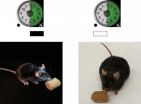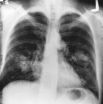SALT LAKE CITY, UT, November 12, 2012 (Press-News.org) iFreedom Direct, a dedicated VA-approved lender serving military members, celebrates Veterans Day 2012 by debuting an informative new graphic on its two company websites and Facebook page. The infographic entitled Beyond Commander in Chief features a timeline of the 44 Presidents and their terms along with 24 headshots of those who served their country in the Armed Forces before calling the White House their home.
Of course, George Washington started it all when he was named Commander in Chief of the Continental Army in 1775 -- even before being elected President. Some Presidents with military experience to follow were Abraham Lincoln, Dwight D. Eisenhower, Theodore Roosevelt, John F. Kennedy and Ronald Reagan. The complete list of military Presidents and their service branches can be found at www.ifreedomdirect.com, www.directvaloans.com and http://www.facebook.com/iFreedomDirect.
This Veterans Day, iFreedom Direct wishes to honor all those who have served our country. Veterans Advocate, Valery Behr, says, "Whether you're President or a citizen of the United States, serving in the military takes bravery and sacrifice. We honor and thank all who have served."
iFreedom Direct is a leading VA-dedicated lender providing federally guaranteed loans with no money down up to $417,000. The loan professionals at iFreedom Direct assist military borrowers with VA loan products including VA purchase loans, VA streamline refinance and VA cash-out refinance loans. To learn more about VA loans, visit www.directvaloans.com.
Contact:
Valery Behr, Content & Communications Manager
iFreedom Direct Corporation 702.499.4164 vbehr@ifreedomdirect.com
Which U.S. Presidents Served in the Military? New Infographic from iFreedom Direct has the Answer
Top VA Lender honors former Presidents who served in the U.S. Armed Forces via an original and educational infographic based on facts obtained from the Dept. of Veterans Affairs, The White House, the Library of Congress, among others.
2012-11-12
ELSE PRESS RELEASES FROM THIS DATE:
Systematic incarceration of African American males is a wrong, costly path
2012-11-12
Mental health experts from Meharry Medical College School of Medicine have released the first comprehensive report on the correlation between the incarceration of African American males and substance abuse and other health problems in the United States. Published in Frontiers in Psychology on the 12th of November, the report looks at decades of data concerning the African American population rates of incarceration and subsequent health issues. The authors conclude that the moral and economic costs of current racial disparities in the judicial system are fundamentally avoidable, ...
Report offers new guidance on family involvement of child abuse case reviews
2012-11-12
Child protection professionals are to be offered new guidance on how best to involve families in the case reviews that follow the death or serious injury of a child as a result of abuse or neglect.
A report being launched today (Monday November 12) will reveal the results of a study led by experts at The University of Nottingham and commissioned by the British Association for the Study and Prevention of Child Abuse and Neglect (BASPCAN).
The research explored the personal experiences of both professionals and families to make recommendations on best practice in this ...
Early stress may sensitize girls' brains for later anxiety
2012-11-12
MADISON — High levels of family stress in infancy are linked to differences in everyday brain function and anxiety in teenage girls, according to new results of a long-running population study by University of Wisconsin-Madison scientists.
The study highlights evidence for a developmental pathway through which early life stress may drive these changes. Here, babies who lived in homes with stressed mothers were more likely to grow into preschoolers with higher levels of cortisol, a stress hormone. In addition, these girls with higher cortisol also showed less communication ...
Climate change threatens giant pandas' bamboo buffet – and survival
2012-11-12
China's endangered wild pandas may need new dinner reservations – and quickly – based on models that indicate climate change may kill off swaths of bamboo that pandas need to survive.
In this week's international journal Nature Climate Change, scientists from Michigan State University and the Chinese Academy of Sciences give comprehensive forecasts of how changing climate may affect the most common species of bamboo that carpet the forest floors of prime panda habitat in northwestern China. Even the most optimistic scenarios show that bamboo die-offs would effectively ...
It's not just what you eat, but when you eat it
2012-11-12
PHILADELPHIA - Fat cells store excess energy and signal these levels to the brain. In a new study this week in Nature Medicine, Georgios Paschos PhD, a research associate in the lab of Garret FitzGerald, MD, FRS director of the Institute for Translational Medicine and Therapeutics, Perelman School of Medicine, University of Pennsylvania, shows that deletion of the clock gene Arntl, also known as Bmal1, in fat cells, causes mice to become obese, with a shift in the timing of when this nocturnal species normally eats. These findings shed light on the complex causes of obesity ...
Using rust and water to store solar energy as hydrogen
2012-11-12
How can solar energy be stored so that it can be available any time, day or night, when the sun shining or not? EPFL scientists are developing a technology that can transform light energy into a clean fuel that has a neutral carbon footprint: hydrogen. The basic ingredients of the recipe are water and metal oxides, such as iron oxide, better known as rust. Kevin Sivula and his colleagues purposefully limited themselves to inexpensive materials and easily scalable production processes in order to enable an economically viable method for solar hydrogen production. The device, ...
A better brain implant: Slim electrode cozies up to single neurons
2012-11-12
ANN ARBOR—A thin, flexible electrode developed at the University of Michigan is 10 times smaller than the nearest competition and could make long-term measurements of neural activity practical at last.
This kind of technology could eventually be used to send signals to prosthetic limbs, overcoming inflammation larger electrodes cause that damages both the brain and the electrodes.
The main problem that neurons have with electrodes is that they make terrible neighbors. In addition to being enormous compared to the neurons, they are stiff and tend to rub nearby cells ...
Gene variations linked to lung cancer susceptibility in Asian women
2012-11-12
An international group of scientists has identified three genetic regions that predispose Asian women who have never smoked to lung cancer. The finding provides further evidence that risk of lung cancer among never-smokers, especially Asian women, may be associated with certain unique inherited genetic characteristics that distinguishes it from lung cancer in smokers.
Lung cancer in never-smokers is the seventh leading cause of cancer deaths worldwide, and the majority of lung cancers diagnosed historically among women in Eastern Asia have been in women who never smoked. ...
Detection, analysis of 'cell dust' may allow diagnosis, monitoring of brain cancer
2012-11-12
A novel miniature diagnostic platform using nuclear magnetic resonance (NMR) technology is capable of detecting minuscule cell particles known as microvesicles in a drop of blood. Microvesicles shed by cancer cells are even more numerous than those released by normal cells, so detecting them could prove a simple means for diagnosing cancer. In a study published in Nature Medicine, investigators at the Massachusetts General Hospital (MGH) Center for Systems Biology (CSB) demonstrate that microvesicles shed by brain cancer cells can be reliably detected in human blood through ...
Researchers discover 2 genetic flaws behind common form of inherited muscular dystrophy
2012-11-12
SEATTLE – An international research team co-led by a scientist at Fred Hutchinson Cancer Research Center has identified two genetic factors behind the third most common form of muscular dystrophy. The findings, published online in Nature Genetics, represent the latest in the team's series of groundbreaking discoveries begun in 2010 regarding the genetic causes of facioscapulohumeral muscular dystrophy, or FSHD.
The team, co-led by Stephen Tapscott, M.D., Ph.D., a member of the Hutchinson Center's Human Biology Division, discovered that a rare variant of FSHD, called type ...
LAST 30 PRESS RELEASES:
Empress cicada wings help illuminate molecular structure
Using sound waves to detect helium
Time burden in patients with metastatic breast and ovarian cancer from clinic and home demands
Researchers discover bias in AI models that analyze pathology samples
Scientists ID potential way to prevent brain injuries from triggering Alzheimer's
MASTER 2nd Open Call: Execution period kick-off
Algae for health in food and pharma
Advanced microrobots driven by acoustic and magnetic fields for biomedical applications
Chicago health information leader recognized for raising CPR readiness and blood pressure awareness
The Intimate Animal, a new book from Kinsey Institute Executive Director Dr. Justin Garcia
When blue-collar workers lose union protection, they try self-employment
New video dataset to advance AI for health care
MEA-based graph deviation network for early autism syndrome signatures in human forebrain organoids
New modeling approach sheds light on rare gut disease
Study documents potentially hazardous flame retardants in firefighter gear
Can certain bacteria regulate aging of the immune system and its related alterations?
AI model helps diagnose often undetected heart disease from simple EKG
There are fewer online trolls than people think
Cell membrane fluctuations produce electricity
Jeonbuk National University study shows positive parenting can protect adolescents against self-harm
Surface-engineered ZnO nanocrystals to tackle perfluoroalkyl substance contamination
This new understanding of T cell receptors may improve cancer immunotherapies
A new fossil face sheds light on early migrations of ancient human ancestor
A new immunotherapy approach could work for many types of cancer
A new way to diagnose deadly lung infections and save lives
40 percent of MRI signals do not correspond to actual brain activity
How brain-inspired algorithms could drive down AI energy costs
Gum disease may be linked to plaque buildup in arteries, higher risk of major CVD events
Contrails are a major driver of aviation’s climate impact
Structure of dopamine-releasing neurons relates to the type of circuits they form for smell-processing
[Press-News.org] Which U.S. Presidents Served in the Military? New Infographic from iFreedom Direct has the AnswerTop VA Lender honors former Presidents who served in the U.S. Armed Forces via an original and educational infographic based on facts obtained from the Dept. of Veterans Affairs, The White House, the Library of Congress, among others.



